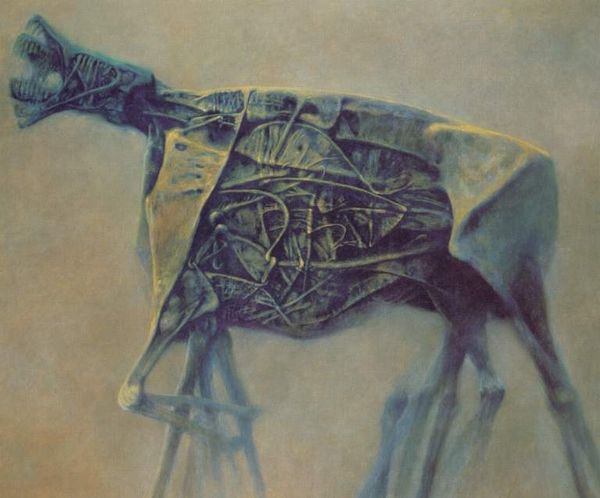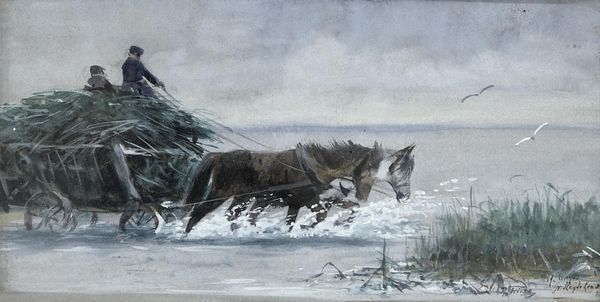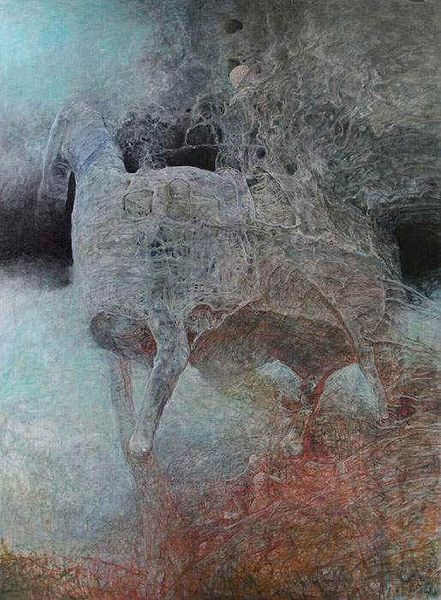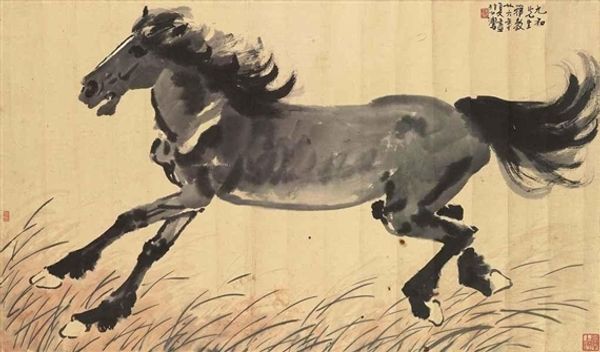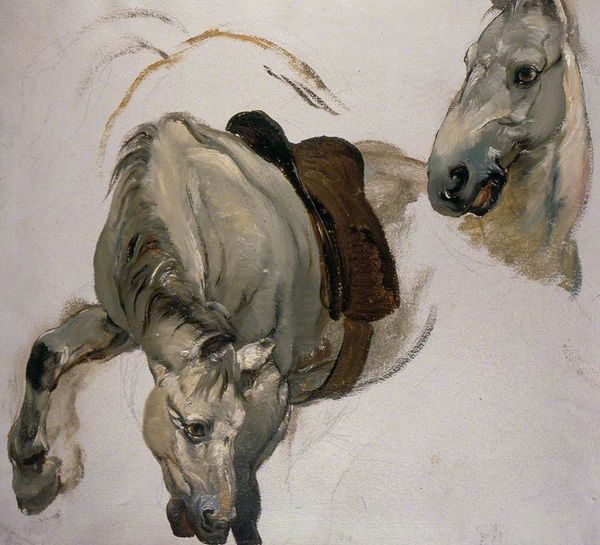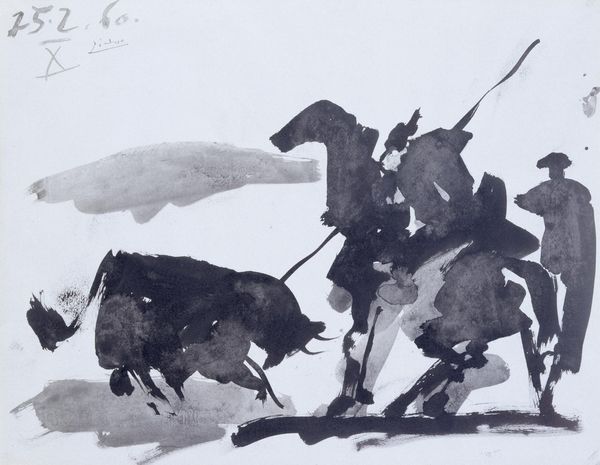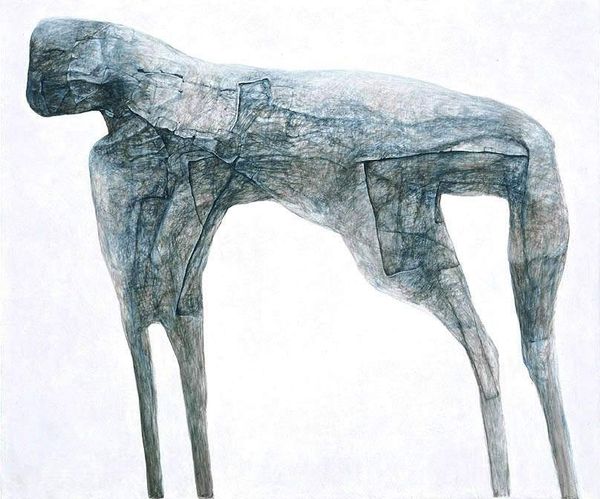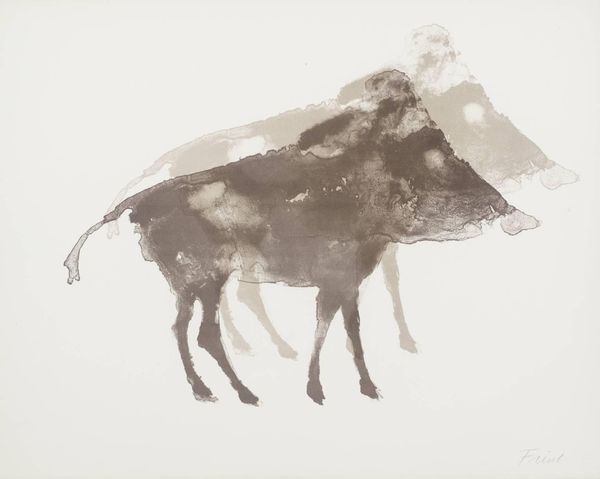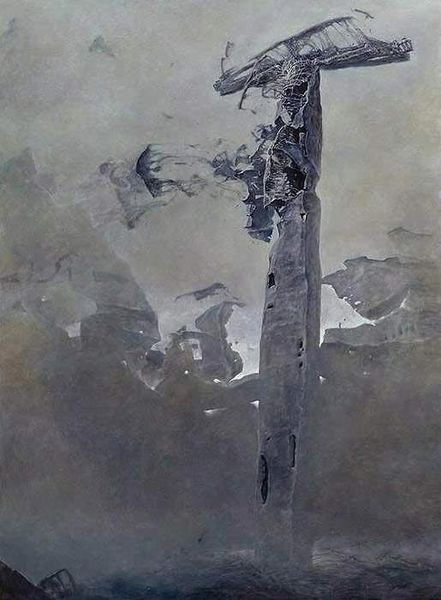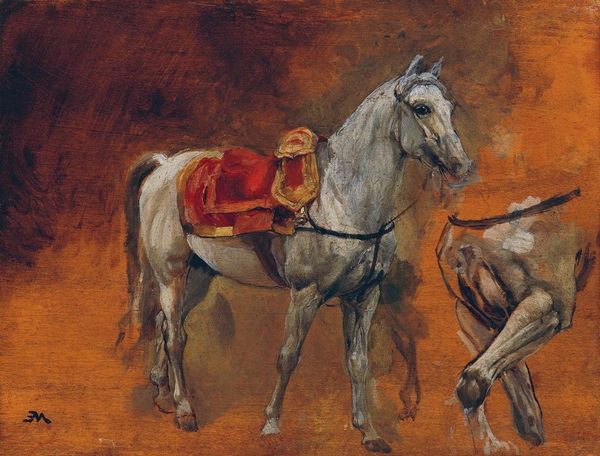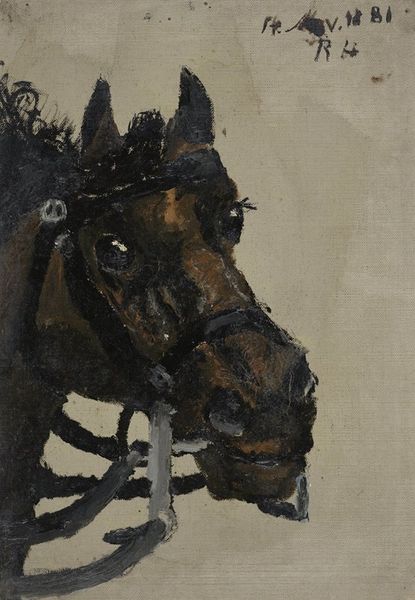
painting, dry-media, impasto, charcoal
#
rough brush stroke
#
painting
#
landscape
#
charcoal drawing
#
figuration
#
dry-media
#
oil painting
#
impasto
#
expressionism
#
charcoal
Copyright: © The Historical Museum in Sanok (Poland) is the exclusive owner of copyrights of Zdzisław Beksiński's works.
Editor: This “Untitled” piece, apparently made with oil painting and charcoal in a dry-media impasto style, depicts a horse and rider, but there’s a distinct roughness to the whole piece. The figures look almost carved from stone, yet the impasto technique gives it this wonderful texture. How do we unpack what this choice of materials and style mean? Curator: Well, consider the labor inherent in that combination of techniques. The artist, Beksinski, built up this heavily textured surface—that's demanding work. Then, think about the choice of charcoal and oil. What statements might the artist be trying to make about traditional forms through the means of production and application here? Editor: That’s an interesting angle. I guess it moves away from the usual polished imagery associated with equestrian portraiture. Are you suggesting it’s a conscious rejection of idealized representations, replaced by a focus on raw material and labor? Curator: Exactly! The “rough brush stroke” becomes more than just a visual element, right? Think about what Expressionism does here; it also communicates something deeper about our human and perhaps social interaction with beasts of burden; or the labor they support? Editor: So, instead of seeing a celebration of power or grace, we’re confronted with the physical process, the materiality, and maybe even the exploitation embedded in that image? Curator: Precisely! We’re made to consider the making of art and its social context. That heavy impasto surface isn't just about texture. How might that materiality challenge ideas about high art vs. craft here? Editor: I hadn't really thought about it like that, I just saw it as "interesting" but understanding that it might speak of commentary, is extremely insightful and changes how I understand the work, considerably! Curator: Art always requires an awareness of these different elements; a single choice could have such reverberations of meaning and interpretation, once one engages in the wider history.
Comments
No comments
Be the first to comment and join the conversation on the ultimate creative platform.

